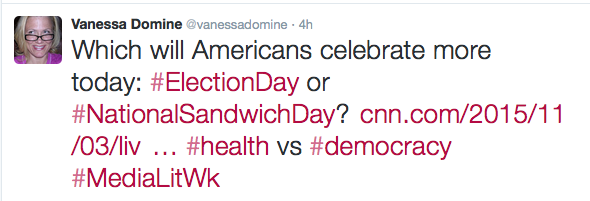Media literacy is key to health literacy. But what does media literacy look like in everyday life? Here is one simple yet elegant example of decoding symbols (logos) that we see nearly every day. The explanation underneath each logo is an excellent example of making explicit the intentional stylistic choices to convey meaning. It is a far cry from the conspiracy theory-saturated examples of “subliminal” advertising that were prevalent in the 1970s and 1980s. This infographic may inspire students to engage in their own graphic design (fine arts) in a more intentional, media-literate, way. Think beyond the curriculum boundaries and pair up with an Economics/Personal Finance teacher as part of a more strategic cross-curricular project. Add Photoshop and the creative possibilities are endless. (To coin a famous yet not-without-controvery slogan: “You’ve Come a Long Way, Baby.”)
Our Competing National Priorities
This week the U.S. celebrates it’s first National Media Literacy Week (thanks to the huge efforts of Michelle Lipkin, the Executive Director of the National Association for Media Literacy Education and her ever-growing possé of media literacy educators, activists, artists and producers. It follows, then, that I would take pause at the fact that today (November 3rd) is also Election Day and National Sandwich Day in the United States. My first inclination was to question (via Twitter, of course) which would Americans devote more time, thought, and energy to: Election Day or National Sandwich Day? Alas, I fear that it is the latter, rather than the former.

